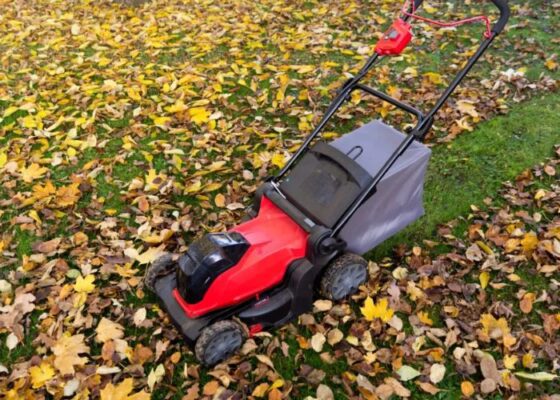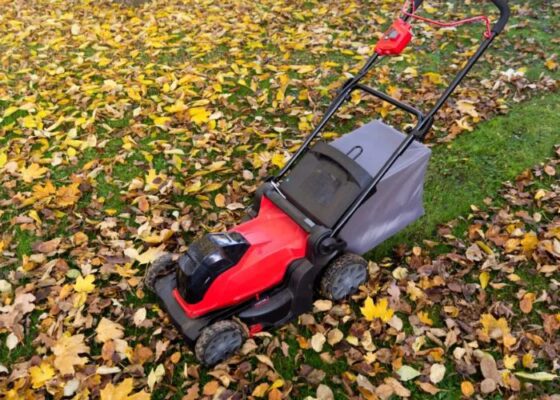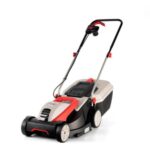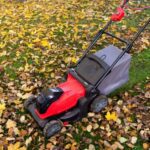With over 7 years as a professional gardener and lawn care specialist, I’ve learned the hard way that proper winter preparation is crucial for a lush, healthy lawn come spring. After yet another long, cold winter wreaking havoc on lawns across the country, I wanted to share the essential tips I’ve developed through trial and error for getting your yard ready before the deep freeze sets in. Read below about “5 Essential DIY Lawn Tips to Prep for Winter in 2024”.
Table of Contents
5 Essential DIY Lawn Tips to Prep for Winter in 2024
Implement these simple, DIY-friendly steps this fall, and you’ll be rewarded with a thicker, greener lawn that’s the envy of the neighborhood next year.
1. Aerate For Improved Root Development
Aerating may sound complicated, but it’s one of the easiest ways to prep your lawn for winter. I aerate my own 7,000 sq ft lawn each fall without fancy tools – just a simple manual core aerator. Aerating improves air, water and nutrient absorption by loosening the soil and alleviating compaction. This allows grass roots to grow deeper and stronger.
For best results, use a core aerator to extract plugs of soil 2-3 inches deep. Make sure to overlap passes in different directions to cover the entire lawn. I do this in early October once temps cool to below 80 degrees F. The lawn may look ragged afterwards, but grass plants quickly recover. And those deep holes capture and hold rainfall through fall and winter.
Pro tip: Rake up any loose debris kicked up by aerating to remove accumulation that can suffocate grass.
2. Overseed To Crowd Out Weeds
When grass grows dense and thick, it chokes out weeds by blocking sunlight from reaching their seeds. But over time, heavy foot traffic, pet urine damage and drought can thin out turf. The resulting bare patches leave room for weeds like dandelions and crabgrass to sneak in.
That’s why overseeding in fall is vital — it boosts turf density. I overseed my lawn every 2-3 years in mid-September using a drop spreader and high-quality grass seed blend matched to my region’s climate. I scatter half the seed walking vertically across the lawn, then spread the other half horizontally. This ensures even coverage.
Water lightly 2-3 times daily to keep seeds moist until they germinate and establish deeper roots. Avoid heavy watering that can wash away seeds. With proper prep, overseeding generates lush results. Last year, I was able to reduce my weed population by over 80%!
3. Fertilize For Cold Weather Vigor

Fertilizing in fall bolsters grass plants’ energy reserves to survive harsh winter conditions. I apply a balanced organic fertilizer over my entire lawn in late October. But I only fertilize if the grass is still actively growing.
The right type of fertilizer is key – avoid high nitrogen formulas (the first number on the bag) which fuel foliar growth resulting in weak, floppy grass blades prone to snow mold fungus. Instead, seek out low nitrogen, high potassium formulas (higher third number) specifically formulated for fall. Potassium strengthens grass stems and roots, increases cold tolerance, and accelerates spring green-up.
Adhere to bag rates, but use half the recommended amount on sloped areas prone to runoff. And never fertilize frozen ground – it won’t absorb nutrients efficiently. Time applications 6 weeks before your average first frost date.
Pro tip: Seek out organic slow-release fertilizers to prevent rapid leaching into groundwater. I’ve found the investment pays dividends in soil health and steady grass growth.
4. Prune Overgrown Perennials
While trees and shrubs go dormant in winter, perennials continue actively growing below ground. Pruning back leggy growth before freezing weather allows plants like black-eyed Susans, coneflowers and sedums to conserve energy.
I clear away any dead or damaged growth first when pruning perennials. Next, I use bypass pruners to cut healthy stems down to about one-third their original size – removing flower heads and seed pods. This triggers fresh growth come spring.
For low-growing perennials like candytuft and creeping phlox, I mow using the highest setting on my lawn mower once foliage dies back. Removing excessive top growth protects crowns and root zones from heavy snow loads that can crush plants.
Properly pruning ornamental plants reduces winter damage, improves structure and enhances next season’s flowers. It’s very satisfying transforming overgrown beds into tidy spaces awaiting next year’s growth.
5. Install Winter Lawn Protection
Bare grass is no match for heavy snow, pouring rain, and bitter winds. Installing winter lawn protection shields tender shoots and crowns. This is especially critical for newly seeded areas, but I recommend it for all lawns in harsh climates.
Covering grass prevents desiccation while allowing sunlight and air circulation. After aerating and final mowing in early November, I unroll breathable landscape fabric over my entire lawn, securing the edges with U-shaped lawn staples. I leave the cover in place until consistent spring temperatures arrive in early April.
An budget-friendly alternative is spreading a 2-3 inch protective layer of shredded leaves collected during fall cleanup. Just chop leaves with a mower first so they won’t mat. The decomposing organic matter doubles as a gentle fertilizer, nourishing soil microbiology.
No matter the covering method used, removing protections once the worst of winter passes allows sunshine to rouse grass plants, initiating photosynthesis and growth.
Get a Head Start on Spring With Proper Fall Lawn Care
As you can see, prepping your lawn properly each autumn sets the stage for success when warmer weather returns. My winter lawn care checklist has made all the difference in maintaining a lush, healthy yard year after year – while saving money and effort compared to spring renovations.
Follow these key tips to avoid disappointment come spring by taking advantage of cooler fall temps:
- Aerate soil to allow deeper rooting
- Overseed to crowd out weeds
- Fertilize to store energy for regrowth
- Prune overgrown perennials
- Install protective winter lawn covers
With the right seasonal care, your lawn will thrive year-round, providing enjoyment while enhancing the beauty and value of your landscape. Don’t leave anything to chance – follow these essential guidelines for readying your yard before winter. And next year, you’ll be the talk of the neighborhood! I hope you like reading “5 Essential DIY Lawn Tips to Prep for Winter in 2024”.

Barry, the expert behind LawnInspection.com, holds a Master’s degree in Horticulture and brings over 20+ years of hands-on experience in landscaping and lawn care. With certifications in sustainable lawn management, Barry is dedicated to providing readers with authoritative insights and practical tips for maintaining lush, healthy lawns. His extensive knowledge and commitment to excellence ensure that every piece of advice on LawnInspection.com helps transform your lawn into a green oasis with proven, eco-friendly practices. Connect with Barry on social media: Instagram and Facebook.










